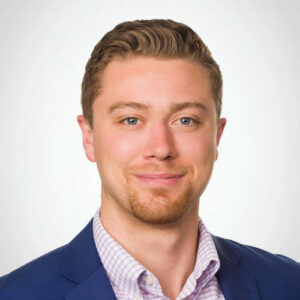What is your business doing to make workflows as efficient as possible? Given how challenging business operations have become over the years, that’s a tall order. You have massive amounts of data, pipelines, and supply chains that have become ever more complicated and technology that has become more and more complex.
But it’s the management of data and information that has become one of the most important issues to tackle for your business. Why? By getting the most out of information and data, your company is better prepared to meet the demands of an always shifting market, rise to the challenge of trends, and make the most out of customer relations. Having a dynamic and proactive insight into this information can help make that rather daunting task much easier.
The big question is how do you better manage that deluge of data and information?
That’s where AIOps comes into play.
What is AIOps?
AIOps utilizes big data, machine learning, and advanced analytics technology to greatly enhance IT operations. Platforms that use AIOps are capable of leveraging multiple data sources, data collection methods, analytic technology, and data visualization tools to glean proactive, personal, and dynamic insights that can then be used for monitoring, automation, and even service desk operations.
AIOps can be used for things like:
- Automated remediation
- Cohort (group-level) analysis
- Cross-domain situational awareness
- Intelligent alerting
- Real-time, proactive performance monitoring
- Root cause identification automation
When you consider AIOps, you must examine the constituent parts: AI and Ops. AI is, obviously, Artificial Intelligence, and Ops stands for Operations. The combination of the two is very much in line with DevOps, which is the blending of development and operations into an environment that brings those two departments together for better and more efficient collaboration.
AIOps is along those same lines, only instead of a department, AI is a technology that is joined with operations to help make the management of usage of information more automatic, seamless, and efficient. And when your company is in the business of working with petabytes of data, giving that process a boost is a must.
But it’s not just about working with large warehouses of data more efficiently, but it’s also about preventing an increase in MTTR (Mean Time to Recovery/Restore), increasing SLA compliance and customer trust, and increasing innovation.
With AIOps, your business is better prepared to make use of data from every point of your IT environment, which means you are better capable of breaking that data out of silos, filtering it, detecting patterns, and clustering meaningful information together that can then be made actionable for specific departments, projects, or goals.
One thing to keep in mind with AIOps is that it’s not just a way to implement new technology and tooling, but a way to:
- Gather and consolidate information into a viable platform for your business.
- Combine analytics and machine learning for efficient and real-time identification, reaction, and reporting on IT issues.
AIOps must be able to ingest, index, and normalize information from networks, infrastructure, applications, current monitoring tools, storage, and the cloud.
Benefits of AIOps
AIOps offers numerous benefits for your business, including:
- Removing noise and distractions so your IT staff can focus on more important issues.
- Making use of data from multiple sources.
- Greatly enhancing cross-team collaboration.
- More efficient and reliable capturing of useful data.
- Automation of root cause analysis and problem-solving.
Popular AIOps Tools
Currently, there’s a fairly short list of popular AIOps tools available. These tools include:
- BMC Helix Operations Management – relies on service-centric monitoring, advanced event management, and next-gen probable cause analysis.
- Datadog APM – specializes in application performance monitoring.
- New Relic One – focused on infrastructure monitoring.
- Cisco’s AppDynamics – specializes in user-experience issues and root cause analysis.
- Splunk Enterprise – leverages AIOps to prevent outages and issue remediation.
- BigPanda – uses event correlation and automation to keep businesses running smoothly.
To succeed with AIOps, companies must lean heavily on machine learning and natural language processing. You also have to understand that modern IT environments are comprised of three different layers: systems, data, and tools. With those three layers working together, you then layer on the necessary algorithms that will help to automate five key dimensions of IT operations monitoring, which are data selection, pattern discovery, inference, collaboration, and automation.
That last bit clearly outlines the ITOps process. First, you filter out unnecessary information from your data (data selection). Next, you correlate and find relationships between the remaining data elements (pattern discovery). The next step is locating the root causes of problems and recurring issues (inference). Once you’ve taken care of the root cause analysis, you move on to notifying the necessary operators and teams to facilitate collaboration (collaboration). Finally, you automate response and remediation (automation).
Each of these steps is crucial for putting together an AIOps platform, which will serve as the heart of your digital transformation and operation. It’s also important that your AIOps platform is capable of ingesting information from numerous heterogeneous sources.
Conclusion
Just remember, in the end, AIOps is about the automation of data usage to greatly enhance IT operations. Although it is a fairly complex process, once you understand how it all comes together, you’re halfway there. And integrating AIOps into your pipelines will help your business more efficiently make use of large amounts of data that might otherwise overwhelm your systems and staff.
If you enjoyed this, be sure to check out our other AI articles.






